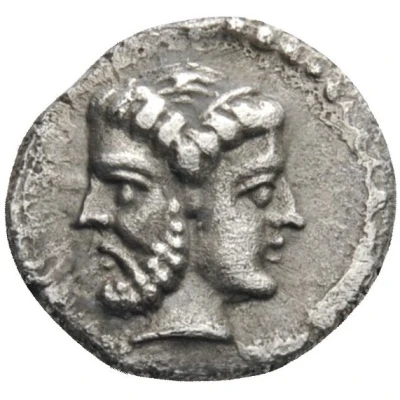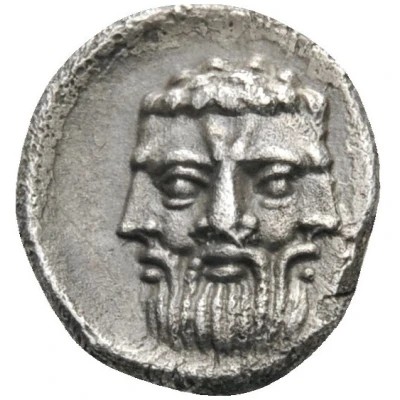


© Nomos AG
Obol 400 BC - 380 BC
| Silver | 0.72 g | 9.0 mm |
| Issuer | Uncertain Cilician city |
|---|---|
| Type | Standard circulation coin |
| Years | 400 BC - 380 BC |
| Value | Obol (⅙) |
| Currency | Drachm |
| Composition | Silver |
| Weight | 0.72 g |
| Diameter | 9.0 mm |
| Shape | Round (irregular) |
| Technique | Hammered |
| Orientation | Variable alignment ↺ |
| Demonetized | Yes |
| Updated | 2024-10-10 |
| Numista | N#237881 |
|---|---|
| Rarity index | 100% |
Reverse
Triform, bearded male head
Comment
Göktürk 37 and pl. XX, 7.
Interesting fact
The Obol coin was used as a form of currency in ancient Greece and was equivalent to one-sixth of a drachma. It was made of silver and had a distinctive design, featuring a dolphin on one side and a crescent moon on the other. The Obol coin was used for small transactions and was widely used by ordinary people for buying everyday goods and services. It was also used as a form of payment for soldiers and sailors. Despite its small value, the Obol coin played an important role in the economy of ancient Greece and was a symbol of the country's rich history and culture.
Price
| Date | Mintage | VG | F | VF | XF | AU | UNC |
|---|---|---|---|---|---|---|---|
| ND (400 BC - 380 BC) | - | - | - | - | - | - |
Values in the table are based on evaluations by sales realized on Internet platforms. They serve as an indication only for Obol (400 BC - 380 BC) coin.